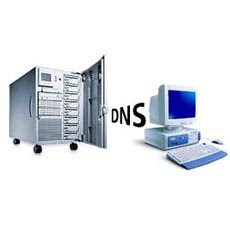The Sentry-go Quick File & Print Monitor allows you to quickly & easily monitor your Windows File & Print server, including local printers & print queues, changes made to both local and remote files, the contents of those files, directory changes & structure modifications, entries written to local Event Logs.
If problems are detected, it can either take automatic action, or alert you before end-users are affected. Using it's in-built web-based reporting, you also have immediate access to monitored information direct from your web browser.
Monitoring Features
Respond Automatically or Alert
Quick Monitors allow you to respond in a number of ways, in the event a fault is detected ...
Web-based Reporting
The built-in web server provides access to the following information direct from your desktop browser ...
Source:sentry-go.com/qm-file-print-server-monitoring.aspx
If problems are detected, it can either take automatic action, or alert you before end-users are affected. Using it's in-built web-based reporting, you also have immediate access to monitored information direct from your web browser.
Monitoring Features
- Monitor key services
- You can monitor key Windows & Print Spooler services running on the local server out of the box. In addition, custom services can also be added, monitored & automatically restarted.
- Check the status of local printers
- Print monitoring allows you to check for & be alerted to errors on local printers such as paper jams, out of paper errors, attention required etc.
- Check the status of local print queues
- Printer queue monitoring & print monitoring allows you to check for & be alerted to problems associated with a local print queue - e.g. excessively high queue length, print job size (higher than expected no. pages or job size) etc.
- Changes made to files & directories
- By monitoring files & monitoring directories, you can be alerted to changes in files, directory structure or the underlying file system. For example, files added, deleted, when files have been updated or not updated, directory/file count, directory/file sizes etc.
- Monitor Server & Print Spooler performance
- Out of the box you can monitor the threshold of important Windows & Print Spooler performance counters such as CPU usage, queue lengths, print job errors etc.
- Monitor errors written to the Windows Event Log
- Sentry-go allows you to monitor messages written to the Windows Event Logs based on error type, event ID, source or keywords & phrases within the text.
- Monitor messages written to custom log files
- In addition to Event Logs, log file monitoring can easily be performed using Sentry-go. Using this, you can also monitor the entries written to text-based log files such as those used for custom applications, based on keywords or phrases within the text.
- Ensure sufficient disk space is available
- To print, the print spooler needs adequate free disk space. Sentry-go can check this for you, clearing down temporary files automatically if free space becomes limited.
Respond Automatically or Alert
Quick Monitors allow you to respond in a number of ways, in the event a fault is detected ...
- Respond automatically by running a command, application, batch file or script
- Automatically restart a failed Windows Service or reboot the server
- Alert you via network messaging, standard or custom e-mails
- Different alerting methods based on day of week and time of day
- Alert you via the Quick Monitor Console
- Alert you via your SMS pager gateway provider Interface with external systems via SMTP, HTTP, or scripting
- Log details to a SysLog Server, database or text file
Web-based Reporting
The built-in web server provides access to the following information direct from your desktop browser ...
- Standard reports - for recent alerts, current status & performance history
- Real-time Printer & Print Queue Summary
- Real-time Printer & Queue Status
Source:sentry-go.com/qm-file-print-server-monitoring.aspx


